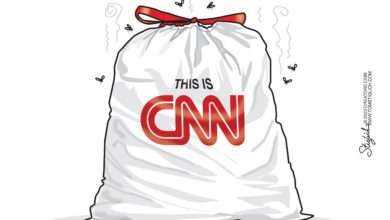Bidenflation Hits Dollar Tree

President Biden’s policies have exacerbated inflationary pressures to a level that even the lowest of discount retailers is getting affected. In fact, it’s forcing Dollar Tree to vacate their long-held “everything’s a dollar” policy.
The retailer said it would start selling products at $1.25 and $1.50 or other prices slightly above $1 in some of its stores, expanding current tests selling items at higher price points as supply-chain snarls, a tight labor market and inflation push costs higher.
https://www.wsj.com/articles/dollar-tree-to-sell-more-items-above-1-as-costs-rise-11632918816?mod=hp_lead_pos4
Although the discounter has toyed with a Dollar Tree Plus section in some stores, the company has widely held to its $1 price policy since it was founded in 1986.
Overpaying workers to stay home during the pandemic and job losses due to the lockdowns have caused massive worker shortages in retail, trucking, warehousing, manufacturing and other key supply chain components. The labor shortage also forces employers to offer more money to entice workers. Those costs are always passed on to customers.
Dollar Tree isn’t the only one hurting. Retailers and consumers feel the pain when everything gets more expensive.
“We know what happens in an inflationary environment, don’t we?” UPS CEO Carol Tome said on an earnings call in September. “Somebody pays for it, usually the consumer, which means price increases get passed along all the way to the end to the consumer.”
“So, there we are in the cycle,” she added.
Aggressive climate change policies have made fuel and energy more expensive and more scarce adding the last component needed to create a supply shortage which is the ‘too few goods’ part of the inflation equation.
Now consider the massive influx of money from numerous COVID stimulus measures, government over-spending, the fed staying “eased” for far too long, and some economies opening back up. Those combined events add the final component for inflation – too much money.
There it is: the classic “too much money chasing too few goods” – or in simple supply-demand terms – high demand with low supply.
Everything from watches to jeans, computers to heating fuel, and cleaning products to meat has risen in price this year and the companies that produce those things say it’s only going to get worse.
In a press release by the U.S. Department of Agriculture, strong domestic and international demand, high feed costs and supply chain disruptions due to the ongoing pandemic are all being blamed for soaring meat costs across the United States.
During the period from July 2020 to July 2021 the cost of beef and veal for consumers has increased by 6.5 percent and pork has increased 7.8 percent. Poultry for consumers has experienced a 5.3 percent increase and fish and seafood realized a 6.6 percent increase.
August numbers are indicating that relief from the increases is not coming soon. For the period between August 2020 and August 2021 the cost of beef and veal increased 12.2 percent while eggs and pork were each up close to 10 percent. The cost for bacon alone has increased a whopping 17 percent over the same period.
https://www.visiontimes.com/2021/09/28/meat-prices-in-the-us-outpace-inflation-amidst-continuing-pandemic-woes.html
Propane stockpiles are down 21% from the 5-year average and at a low point for the three-year average. Fuel oil and other distillates also see shortfalls which will lead to even higher prices for manufacturers, logistics companies, and, ultimately, consumers.
Current stock levels are low and are unlikely to build up enough to reach typical storage levels prior to winter. As of Sept. 2, current U.S. total propane supplies sit at 69.282 million barrels. This is at the bottom of the three-year average range. At the same point in time last year, there were 95 million barrels. We would need to see roughly 20 million barrels of propane added to storage reserves in the next five weeks to get close to what the industry would consider normal pre-winter levels for propane supplies.
https://www.mfaoil.com/propane-supplies-lower-than-normal-heading-into-winter/
Inflation in the fuel and energy sectors will breed inflation in every sector as manufacturers and retailers rely on shipping and electricity while raw goods producers need products that include petroleum distillates (ie. fertilizer, diesel, plastics).
None of these inflationary drivers are expected to reverse any time soon and we may be just “one supply chain glitch away from stagflation”, according to economist Stephen Roach:
“The likelihood of continued [supply chain] bottlenecks moving from one area to another, which is strikingly reminiscent of what we saw in the early 1970s, suggests that inflation will stay at these elevated levels for longer than we thought,” Roach said. “The Federal Reserve is already beginning to back pedal on its recent view that these pressures will fade quickly.”
If stagflation materializes, he contends, it could coincide with the holiday spending season.
“The impact will primarily be through the price level,” said Roach. “We need to look much more carefully about the potential risks.”
https://www.cnbc.com/2021/09/30/supply-chain-chaos-may-spark-1970s-type-inflation-stephen-roach.html
Content created by Conservative Daily News and some content syndicated through CDN is available for re-publication without charge under the Creative Commons license. Visit our syndication page for details and requirements.




